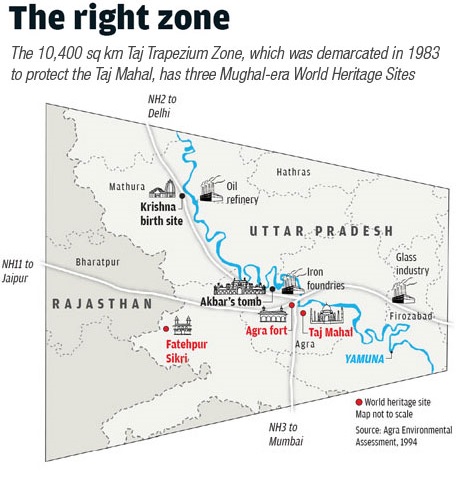7667766266
enquiry@shankarias.in
The Supreme Court has directed the Agra Development Authority to stop all commercial activities within a 500-metre radius of the Taj Mahal, a UNESCO World Heritage Site.

References